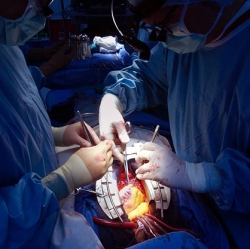
Coronary heart disease (CHD) is arguably the the UK’s biggest killer. CHD develops when the blood supply to the muscles and tissues of the heart becomes obstructed by the build-up of fatty materials inside the walls of the coronary arteries.
Your heart is a pump the size of a fist that sends oxygen-rich blood around your body. The blood travels to the organs of your body through blood vessels known as arteries, and returns to the heart through veins.
Your heart needs its own blood supply to keep working. Heart disease occurs when the arteries that carry this blood, known as coronary arteries, start to become blocked by a build-up of fatty deposits.
The inner lining of the coronary arteries gradually becomes furred with a thick, porridge-like sludge of substances, known as plaques, and formed from cholesterol. This clogging-up process is known as atherosclerosis.
The plaques narrow the arteries and reduce the space through which blood can flow. They can also block nutrients being delivered to the artery walls, which means the arteries lose their elasticity. In turn, this can lead to high blood pressure, which also increases the risk of heart disease. This same process goes on in the arteries throughout the body, and can lead to high blood pressure which puts further strain on the heart.
If your arteries are partially blocked you can experience angina – severe chest pains that can spread across your upper body – as your heart struggles to keep beating on a restricted supply of oxygen. You are also at greater risk of a heart attack.
